App Store Optimization (ASO) plays an important role in mobile app development, assuring the success and exposure of your product. ASO is tweaking several aspects of your app’s listing to increase discoverability and generate more organic downloads.
Regarding ASO, two key competitors dominate the market: the Apple App Store and the Google Play Store.
What is ASO?
ASO is the process of optimizing mobile apps to rank better in app store search results and increase their visibility. It entails strategically optimizing app elements such as Keywords, App Titles, Descriptions, Icons, Screenshots, Ratings, Reviews, and more.
Why is ASO important?
App Store Optimization (ASO) is the most important aspect since most app installs are activated through app store searches. With millions of apps available, keeping the app on the first page of search results is essential for enticing user’s attention.
Effective ASO strategies can assist in enhancing app awareness and organic downloads and endorse user engagement and income.
Differences between the Google Play Store and the Apple App Store
While both the Google Play Store and the Apple App Store serve as platforms for mobile apps, they have significant variations in terms of Market Share, User Base, App Discovery, And User Behavior.
1- App Store Ecosystems
Overview of Google Play and the Apple App Store
Google Play: As the primary app store for Android smartphones, Google Play has a larger global market share than the Apple App Store.
Apple App Store: The App Store caters only to iOS users and is known for its strict review process, ensuring higher quality and more refined app options.
Market share and user base of each platform
Google Play: By means of its dominance in the Android industry, Google Play has a bigger reach, covering countless device manufacturers and a larger user base.
Apple App Store: Although the Apple App Store has a smaller market share, iOS users tend to spend more on apps and in-app purchases, making it a first-class platform for developers.
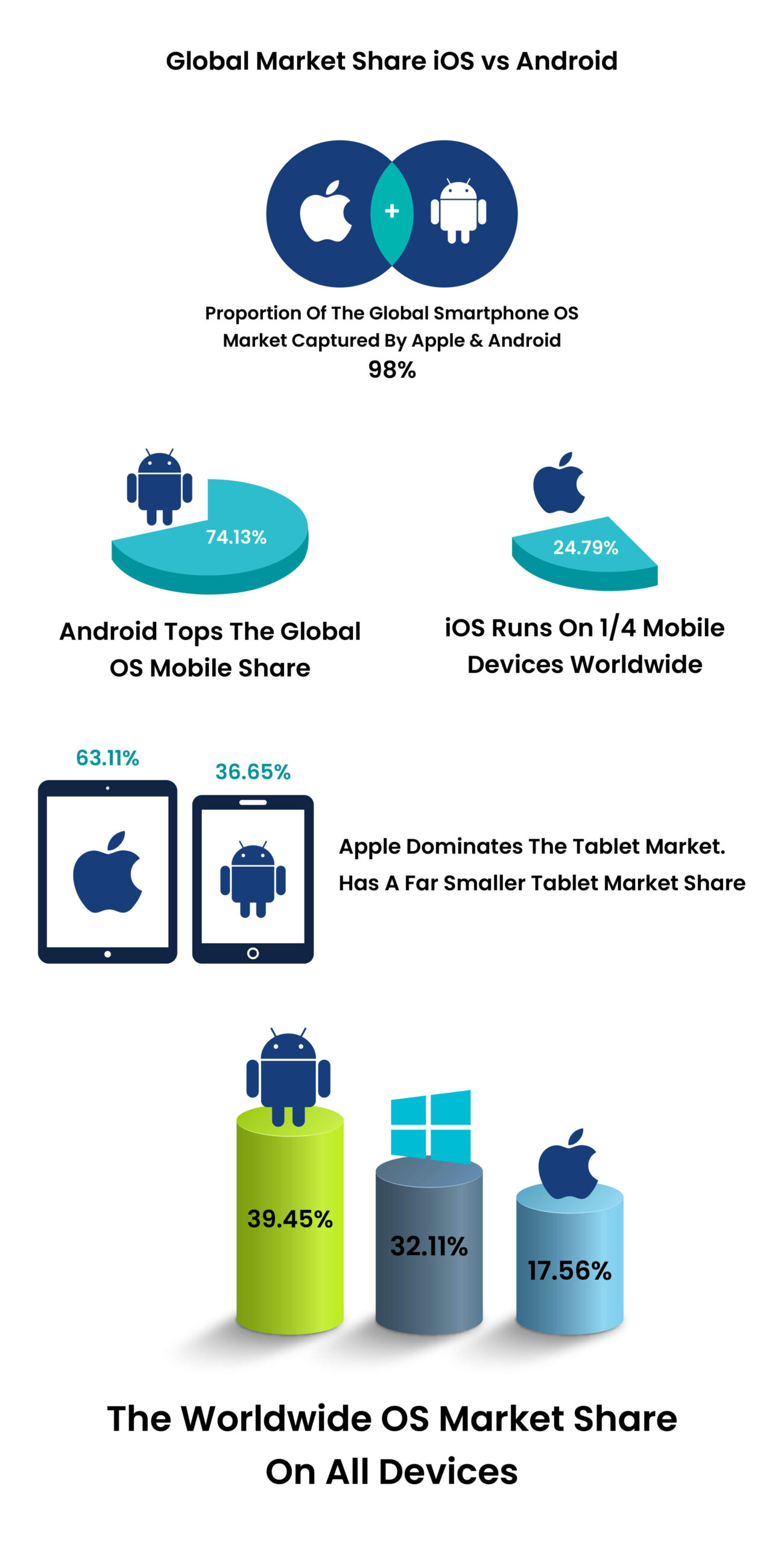
Differences in app discovery and user behavior
Google Play: Google Play prioritizes personalized suggestions and highlights trending and popular apps. User behavior favors free app downloads and in-app purchases.
Apple App Store: Focuses on editorial curation, highlights handpicked apps, and encourages paying apps. Users are more likely to acquire apps and subscribe to services.
2- Keyword Research and Optimization
The Importance of Keywords in ASO
ASO is built on keywords. They determine where your app shows in search results. Proper keyword research and optimization can significantly impact your app’s visibility and organic downloads.
Keyword research tools and strategies
Google Play: Provides minimal keyword analysis. To identify suitable keywords, developers must use third-party technologies and competitive analysis.
Apple App Store: Provides some keyword suggestions but lacks specific data. External keyword research tools are required for in-depth study.
Differences in keyword optimization campaigns
Google Play: For keyword optimization, Google Play focuses on the app’s description, title, and developer name.
Apple App Store: Keywords should be strategically put in the app title, subtitle, keyword field, and app description. The keyword field has the largest influence on search rankings.
3- App Title and Description
Best principles for creating a good app title
Google Play: Google prioritizes app titles that are brief and descriptive and incorporate relevant keywords.
Apple App Store: Suggests a shorter app title while combining important keywords and highlighting unique selling features.
Optimizing app descriptions for Google Play and the Apple App Store
Google Play: Use the description to engage users, highlight unique and demanding features, and include relevant keywords.
Apple App Store: Use the description to tell an interesting concept, featuring benefits, and carefully use relevant keywords.
The outcome of the app title and description on search rankings
Both platforms highly emphasize the presence of keywords in the app’s title and description when evaluating its rating. Increased search visibility and organic downloads are benefits of having a well-optimized app title and description.
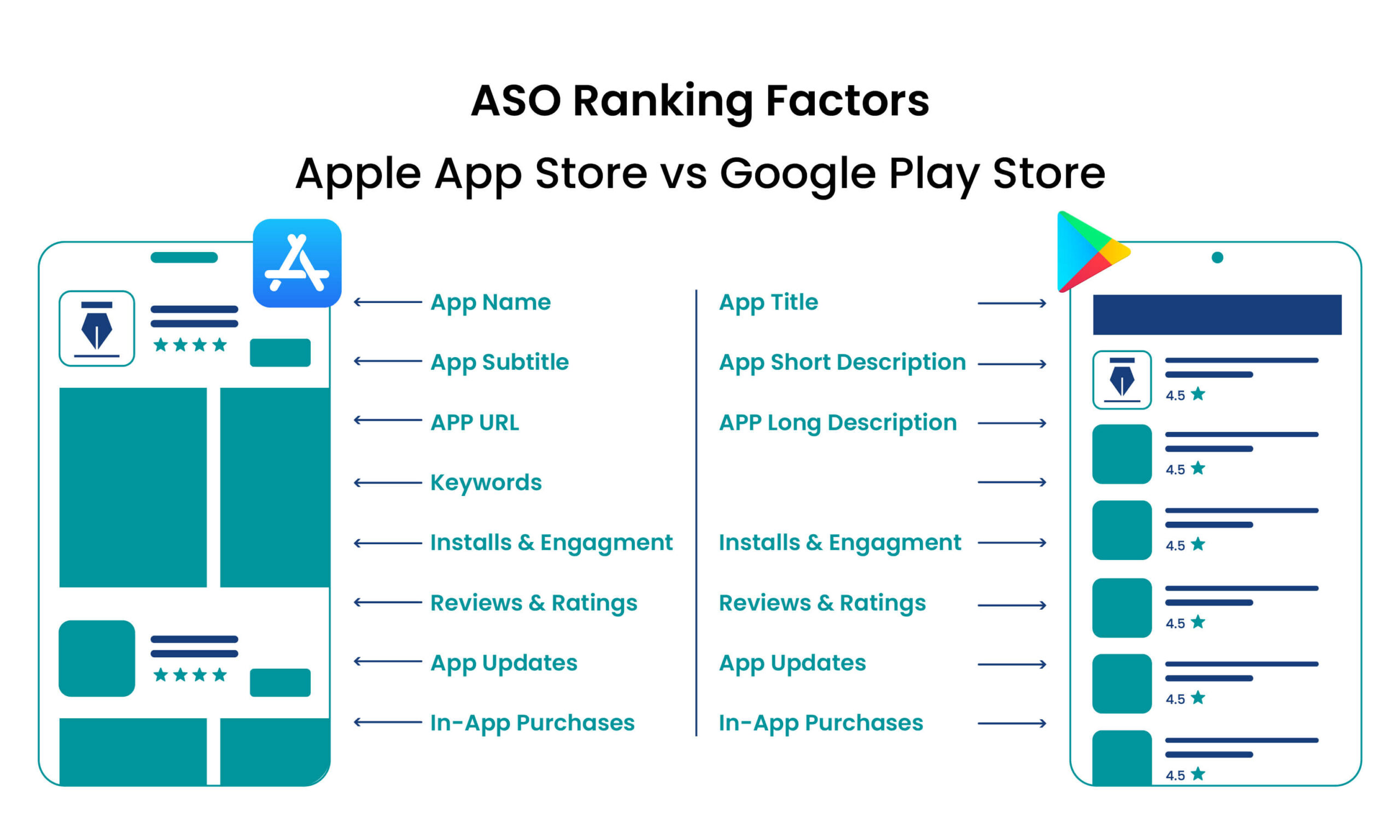
4- App Icon and Screenshots
The role of the app icon and screenshots in ASO
The app icon and screenshots are the visual elements that make a first impression on potential users. They are critical in grabbing attention, increasing click-through rates, and communicating the app’s value proposition.
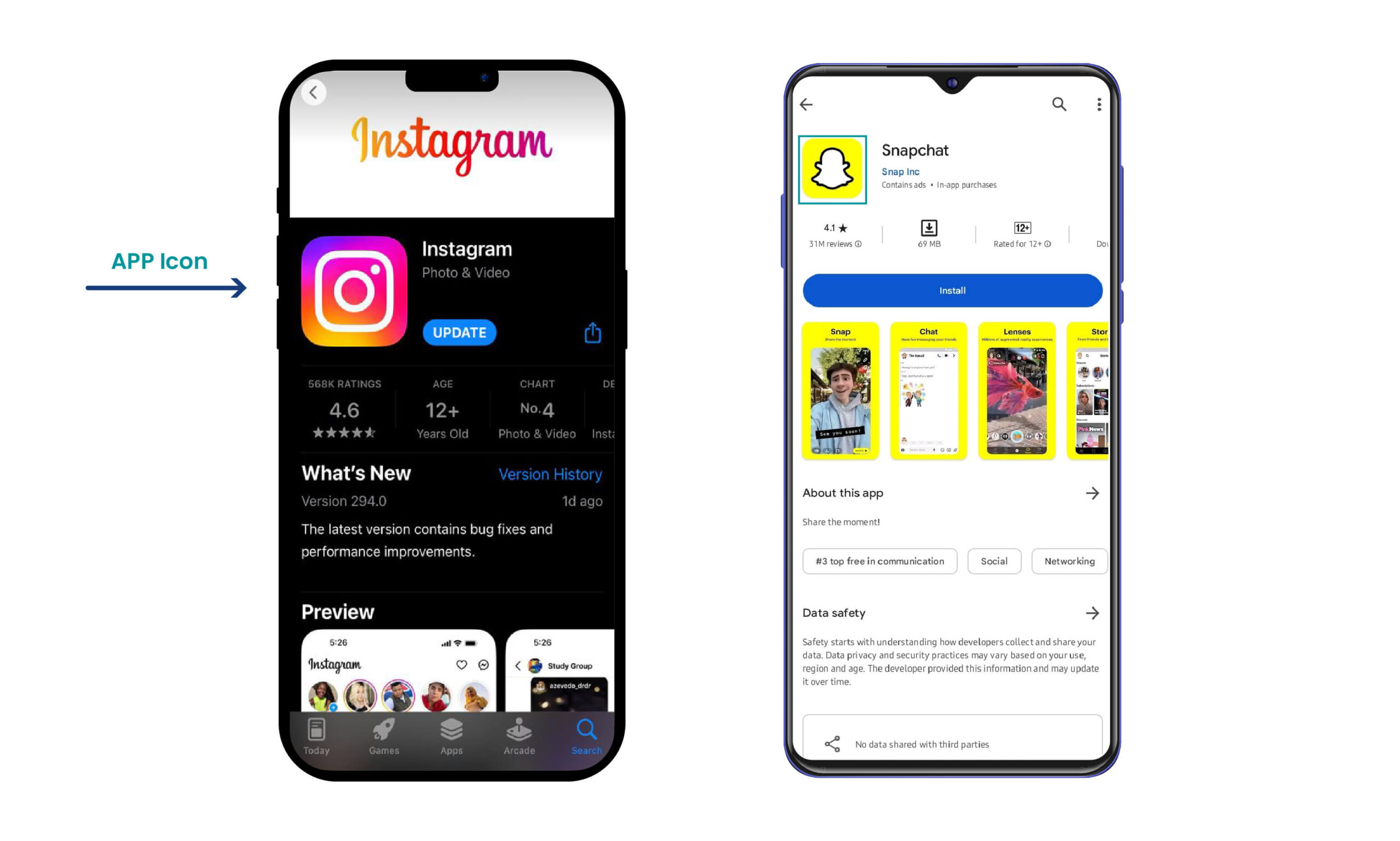
Design considerations for app icons and screenshots
Google Play: Emphasizes clean, visually appealing designs with clear branding and product representation.
Apple App Store: Encourages creative and visually different icons that reflect the app’s fundamental functionality.
Guidelines and criteria for Google Play and the Apple App Store
The criteria for app icons and screenshots on both platforms are completely different. These requirements include the required size, resolution, and content. If you follow these guidelines, you can ensure that your presentation and visibility will be excellent.
5- Reviews And Ratings
The Importance of Ratings and Reviews in ASO
Ratings and reviews are important factors affecting an app’s reputation and how users choose to interact with it. Increasing an app’s ranking in the app store can be accomplished by the buildup of positive reviews and ratings from users.
Positive review and rating strategies
- Encourage users to post reviews and ratings using in-app prompts and customization requests.
- Respond quickly to user feedback, address concerns, and give exceptional customer service.
- Management of bad reviews and ratings on each platform.
Differences in internationalization practices
Google Play: Allows you to openly respond to reviews, allowing you to resolve problems and demonstrate proactive customer support.
Apple App Store: Allows developers to react to reviews privately and suggests that customers edit or change their ratings.

6- Localization and internationalization
Benefits of Localizing Apps for Different Markets
You can reach a bigger audience, which in turn will lead to an increase in downloads and an improvement in user engagement. It requires modifying the app’s language, content, and design to correspond to the various areas.
Approaches to app localization for Google Play and the Apple App Store
Both platforms include localization capability, enabling users to have software with names, descriptions, and screenshots specific to their language. In addition, localization details can be found within the developer interface of Google Play.
It requires modifying the app’s language, content, and design to correspond to the various areas.
Differences in internationalization practices
Google Play: enables developers to publish unique localized versions of their apps for different countries.
Apple App Store: Supports several language options inside a single app, allowing users to switch languages smoothly.
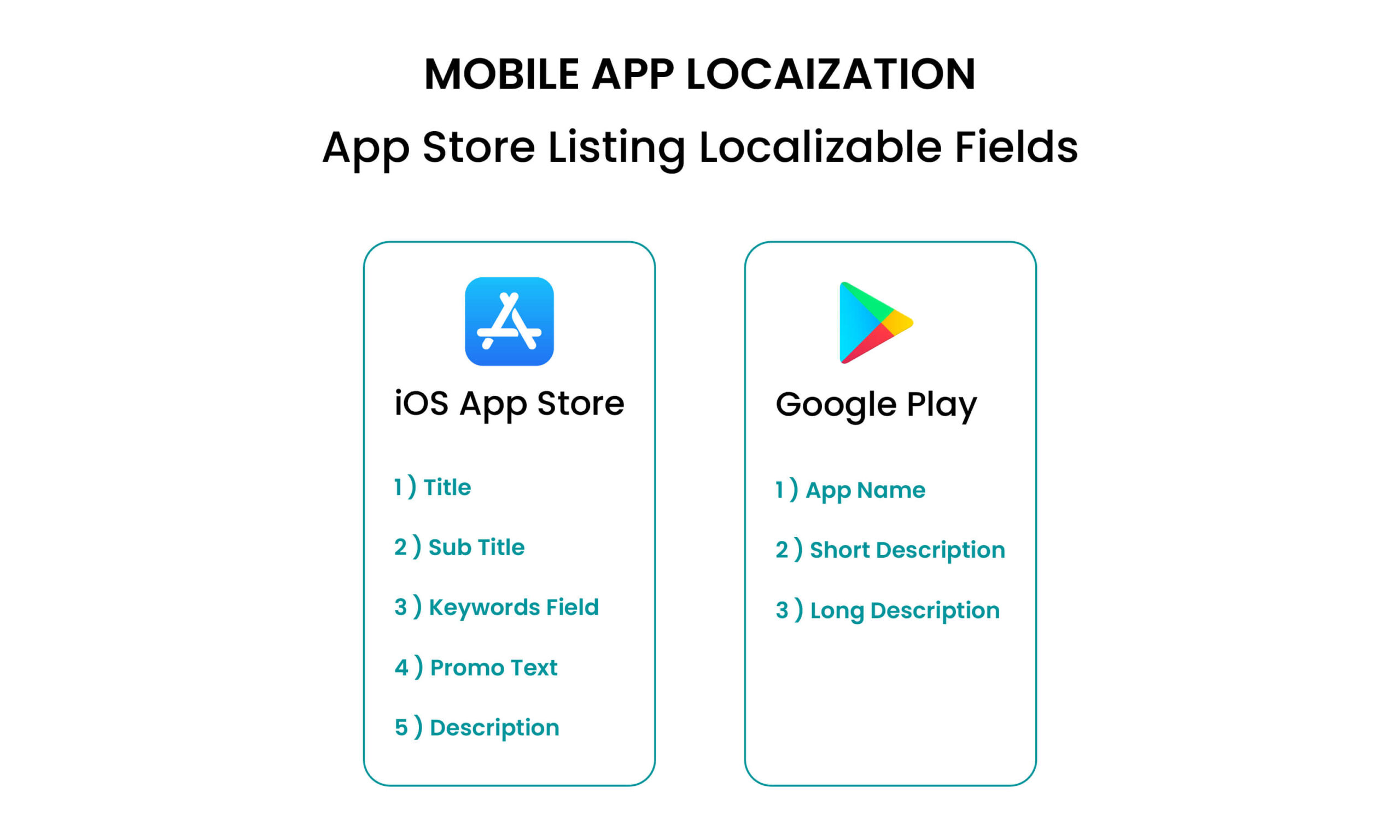
7- A/B Testing and App Updates
The significance of regular app updates
Regular updates to an application represent ongoing development, fixing bugs, and adding new features. The user experience, engagement, and overall ASO can all benefit from regular updates.
A/B testing for ASO optimization
A/B testing involves experimenting with various app aspects such as icons, images, descriptions, and prices to determine the most effective variations and optimize ASO techniques.
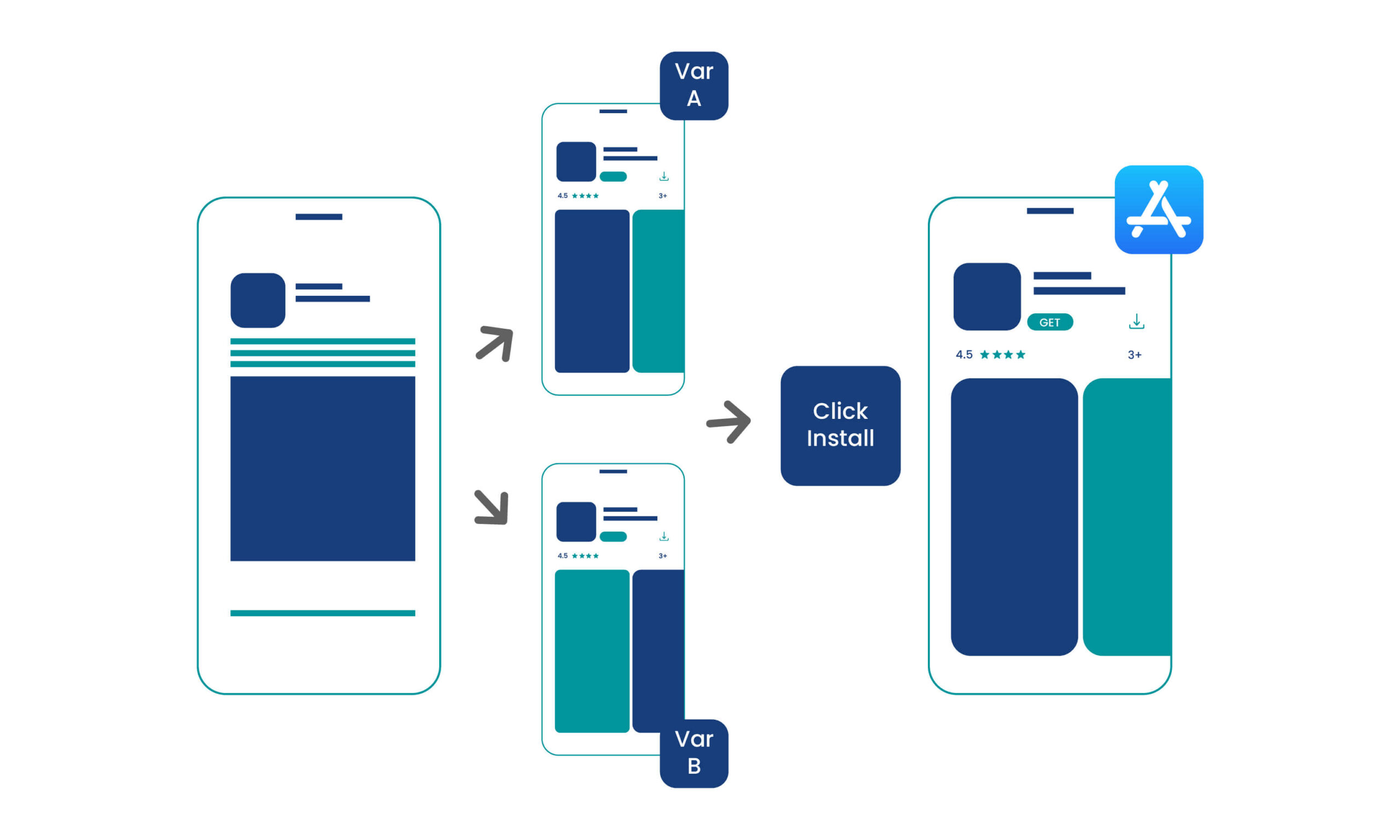
Release processes and update guidelines for each platform
Both platforms have unique requirements for app upgrades, including submission protocols, review processes, and compliance with platform policies.
Conclusion
Because of the intense rivalry for app visibility and user downloads, it is essential to understand the unique characteristics and subtleties that differentiate ASO strategies for the Apple App Store and Google Play.
Developers can boost their app’s exposure, attract more organic downloads, and maximize its potential for success by utilizing the one-of-a-kind features and optimization strategies each platform offers.
Frequently Asked Questions
-
What are the primary differences between ASO for Google Play and App Store?
ASO strategies for Google Play and the App Store differ in various ways, including keyword optimization techniques, app title, and description criteria, and the emphasis on specific app features such as screenshots and icons.
Understanding these differences is essential for customizing your ASO efforts to the unique requirements of each platform. -
What are some of the best ASO strategies for Google Play and the App Store?
Some general best practices for ASO include conducting extensive keyword research, optimizing app titles and descriptions with relevant keywords, designing visually appealing icons and screenshots, encouraging positive ratings and reviews, localizing apps for different markets, regularly updating the app with new features and bug fixes, and conducting A/B testing to optimize app elements.
However, because of their different algorithms and user behavior patterns, exact best practices may differ across Google Play and the App Store. -
What are some of the tools that can assist with ASO?
There are various technologies available to help in ASO efforts. App Annie, Sensor Tower, Mobile Action, TheTool, AppFollow, and Google Play Console (for Android apps) are other popular choices.
These tools include insights into keyword rankings, app performance metrics, competitor analysis, and user reviews, which can assist in informing your ASO strategy and decision-making. -
How ASO Tools Can Help To Improve App Store Rankings
ASO (App Store Optimization) tools help improve app store rankings by:
1- Keyword Research: Finding relevant keywords for better search visibility.
2- Competitor Analysis: Learning from successful apps and refining strategies.
3- Optimized Metadata: Crafting compelling titles and descriptions.
4- Localization: Adapting content for different regions and languages.
5- A/B Testing: Experimenting with visuals and descriptions.
